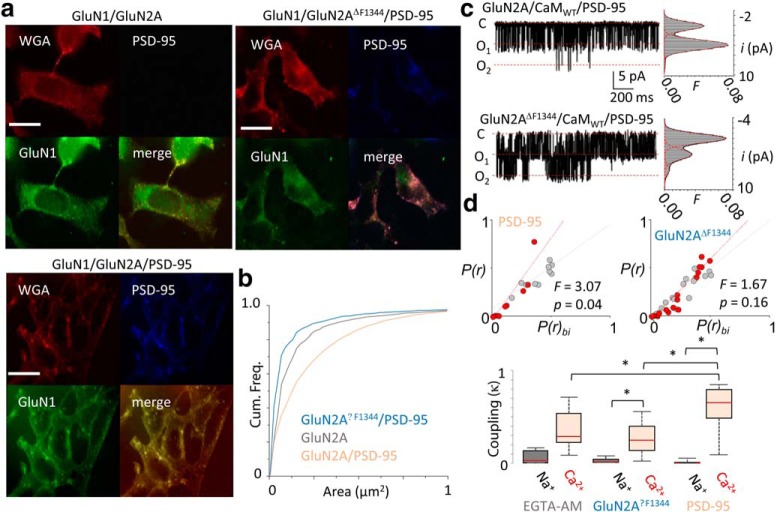Figure 3.
PSD-95 overexpression enhances negative cooperativity of NMDA receptor currents. a, Top, Representative immunofluorescence images of HEK293 cells expressing GluN1–2a, GluN2A, and PSD-95, as indicated, and stained for GluN1 (green), PSD-95 (blue), and WGA (red). Scale bar, 25 μm. b, Cumulative probability of GluN1-positive punctae area for the indicated constructs. c, Representative current traces recorded from a two-channel patch with 0 or 1.8 mm external Ca2+ in cells coexpressing CaMWT and PSD-95, with corresponding amplitude histogram superimposed with fitted Gaussian components (red dashed) and probability density function (black). d, Top, Correlation of conductance class occupancies for GluN1-2a/GluN2A receptors (left) and GluN1-2a/GluN2AΔF1344 (right) coexpressed with PSD-95 showed substantial deviations from the predicted open conductance occupancies predicted from binomial distribution for independent gating (red dashed curves); *p < 0.05, Mann–Whitney U test compared with simulated datasets. Bottom, Distributions of κ values in the conditions indicated; *p < 0.05, Mann–Whitney U test.

